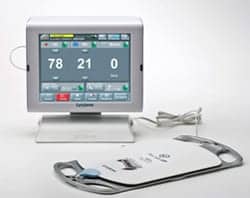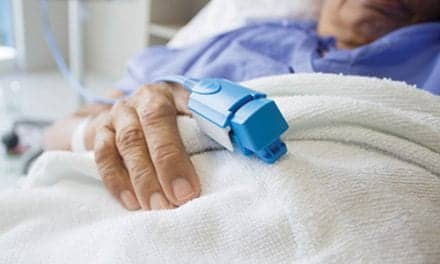
At the Philips Respironics booth, I came across a demonstration of the company’s forthcoming app for iOS and Android phones and tablets, called SleepMapper. This product—which is scheduled for a full rollout early in 2013—allows CPAP users to learn more about obstructive sleep apnea (OSA), monitor their use of the machine, troubleshoot problems, and more. The value of an app like this was pretty obvious. But are patients, providers, and clinicians ready to embrace it?
All the evidence suggests they are. It’s been estimated that by the end of 2012, more than 40 million health care apps will have been downloaded. Already, there are more than 40,000 health care apps available for smartphones and tablets. In one study, more than half of Baby Boomers surveyed said they would use an app to monitor their health. In another, 9 in 10 physicians said they would like to see their patients monitoring their health at home.
In the respiratory care field, the numbers are similarly positive. As Maura Toole, director of sleep marketing for Philips Respironics, points out, those app-happy Baby Boomers make up a large and growing segment of the CPAP market. Clinicians are primed to support app use as well: in a recent survey of our readers, we found that 30% owned an iPad, and that doesn’t count those using other tablets or smartphones.
There’s plenty of reason for CPAP users in particular to use a product like SleepMapper. There’s value in the education alone—watching a video about how to fit a mask or maintain your machine can help many users. But more important is the immediate feedback an app like this provides. As Toole says, it provides patients with “access to the machine’s data and additional helpful information so they can understand what’s going on with their therapy when they are at home without the therapist at their side.”
As with so many other digital technologies, apps tend to disintermediate health care—that is, they cut out the middleman, and put the user in charge of monitoring their health. In some industries, the middlemen would object. But in the overloaded US health care system, anything that reduces the need for office visits and expedites decision making is welcome to practitioners.
Moreover, there are plenty of other benefits to providers and clinicians from health care apps. Not only can they see better patient outcomes, but they also have easier and more cost-effective access to patient data. With the SleepMapper, for instance, data are transferred from a Bluetooth module added onto the CPAP device to the user’s tablet or smartphone. Once there, the data can be uploaded to the Philips Respironics cloud-based data-management system, EncoreAnywhere. Though it’s been possible previously to upload data from CPAP machines, doing so has required a modem module with a monthly transmission fee of $5 to $8.
The most compelling reason for widespread adoption of apps like the SleepMapper also might be the most unexpected. As Toole notes, there’s only so much that medical device technology can do to improve compliance. “Technology alone can’t tell a patient to use a device,” she says. “There has to be an emotional connection.” The use of mobile apps opens up what might be called the next frontier in patient compliance: creating a personal, emotional bond with one’s therapy.
— John Bethune









